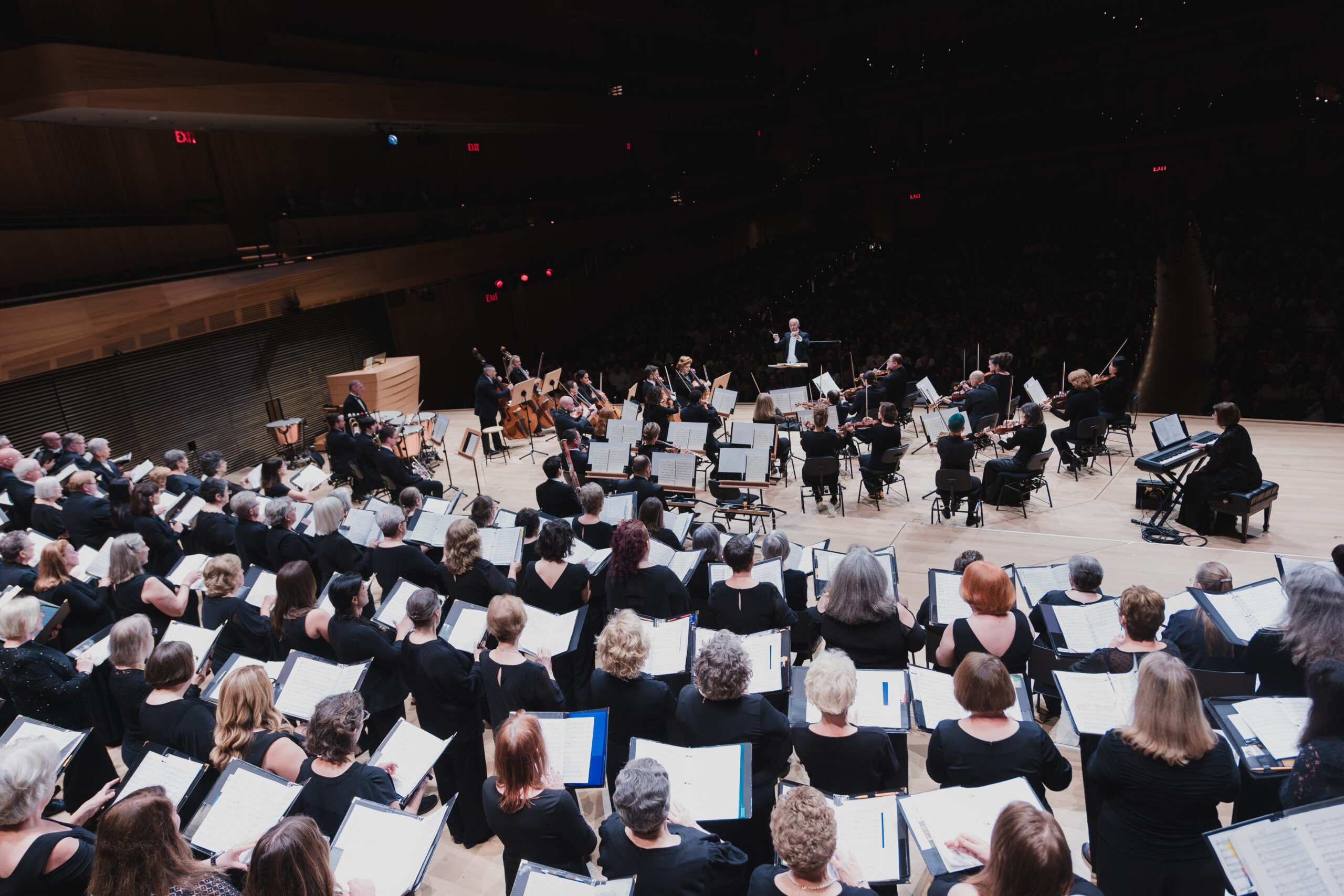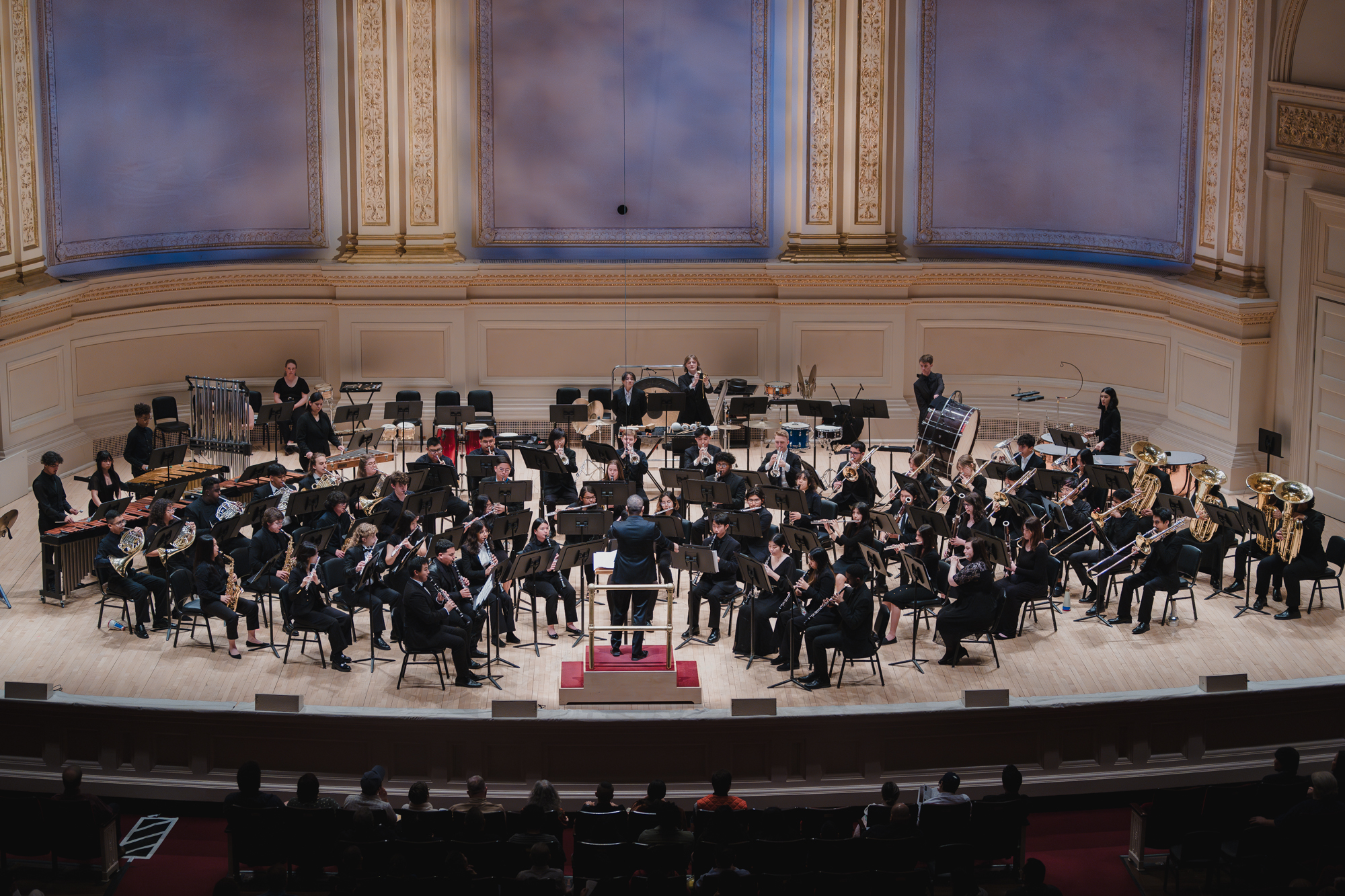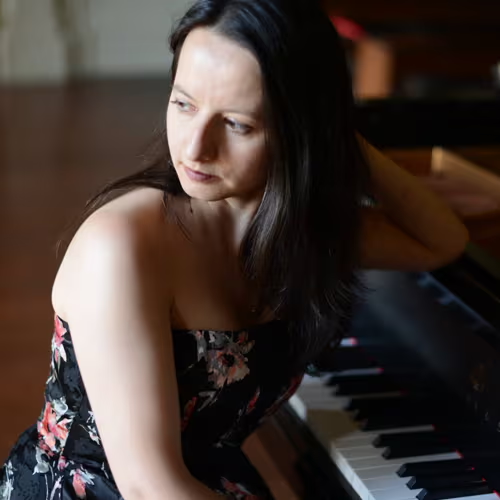Teodora Brody, vocalist; Stanley Jordan, guitarist and pianist
Zankel Hall at Carnegie Hall, New York, NY
November 8, 2024
There is something odd in writing music criticism about musical performers as natural and spontaneous as vocalist Teodora Brody and guitarist-pianist Stanley Jordan. It is rather like reviewing a forest or an ocean. Where does one start – and why? The best that one can do is to urge music lovers to hear them in live concert – rather, experience them – as a large crowd did at Carnegie’s Zankel Hall last Friday. As individual artists, Ms. Brody and Mr. Jordan have reached the heights in their fields, but to evaluate what they did together in this latest program by any established standards would be a mistake. They were doing something rare and original, a musical exploration à deux that was raw, real, and completely of the moment.
Some background on the two is in order. Guitar virtuoso Stanley Jordan has drawn the world’s attention (including this mostly classical musician’s) for decades. His visionary musicality – along with his piano background – led to his probing of touch techniques (including “hammer-on” and “pull-off” techniques using just one hand) to achieve ever greater textures and expressivity, even playing two guitars (or guitar and piano) simultaneously. (The reader can hear his version of “Stairway to Heaven” as one example: Stairway to Heaven- Stanley Jordan.) His music (whether pop-rock, innovative jazz, or classical reimaginings) has taken him to Kool Jazz, Concord Jazz, and Montreux Jazz festivals, as well as earning him four Grammy nominations. The long list of famous musicians he has played with is impressive, including Dizzy Gillespie, Kenny Rogers, Les Paul, and others. Notable among these luminaries was the great Quincy Jones, whose death the world mourns this month and with whom Mr. Jordan played in 1976 while still in high school. To round out the picture, Mr. Stanley’s scholarly credentials include a Bachelor of Arts from Princeton, where he studied theory and composition with Milton Babbit. His impulse for outreach has him now working towards a master’s degree in music therapy at Arizona State University, along with being a lecturing artist and spokesperson in that field. He seems to have no limits.
Crossover artist Teodora Brody, acclaimed vocalist in her native Romania and internationally, has similarly impressive credentials, particularly for her fusion of jazz with Doina, the improvisatory folk tradition of Romania. She has been the recipient of important honors from Romania and the US and has performed at the Montreux, Marciac, and Lugano festivals, among others, as well as at the US Library of Congress, the Corcoran Gallery of Art, New York’s Iridium, and the Kennedy Center. In two weeks, she will perform with the London Symphony Orchestra, with whom she recorded a CD entitled Rhapsody in 2023. She has performed with Johnny Răducanu, Les Paul, and many other well-known artists, and often throughout Europe with Stanley Jordan, who calls the experience of playing with her as “indescribable and unpredictable magic.” Indescribable is what her voice itself is as well, but we are tasked with detailing what we heard, so let’s start with a pitch range of four octaves (bringing to mind the legendary Yma Sumac), matched by the widest imaginable spectrum of timbres and colors, from whispers, moans, and wails to sustained piercing heights, all combining into a limitless palette in service to a fearless spirit.
There was no actual program given out at this concert (just a booklet with biographies and the like), as we were informed that the duo would perform without programs, scores, or even rehearsal. For this concert – fittingly called “Impromptu” – the goal was to create a “wild journey,” as Ms. Brody announced from the stage, connecting to one’s inner self and exploring (as the printed notes state) “how suffering can be transformed into wisdom through the beauty within us all.” Though many classical and jazz musicians also profess to follow the inner self and play all or partially without a score, this particular collaboration took spontaneity to new levels. Aside from a handful of nods to notated music towards the end of this concert, the evening was about an hour and a half (with no intermission) of completely spontaneous music-making, never to be repeated, with almost no songs or composers for a reviewer to cite. With only what one imagines may have been some safety net from past collaborations, the duo launched, with the audience, into the unknown.
The unknown can be unsettling, but in a way that mirrors life. As there were no breaks for talking or applause for roughly the first forty-five minutes of the concert, one was never certain what lay ahead, or for how long – or even how the duo was managing synchronized transitions from one mood or harmonic progression into the next with no visible cues (except for what seemed some possible signals via a cylinder bell from Ms. Brody at certain junctures or lulls). There were often no discernible words either, merely syllables, but as the concert was presented by the Associazione Unifying Worlds, it seemed fitting that the chief language was music. One had to do the best one could to understand it all, but we knew we were in good hands.
How does one start a duo performance with no rehearsal or score? The answer is: alone. Ms. Brody began the program with what resembled an incantation centering on a few words about “the play of life and death we see everywhere,” but the eerie and dramatic tone took musical shape chiefly from wordless syllables to follow. Centering often on a single focal pitch around which she wove expanding melodies (seemingly influenced by her Doina singing, with flavors and motives of Middle Eastern music), she clearly followed that “inner self” with what started as basic harmonic support from Mr. Jordan and evolved into a joint exploration. Together, they settled into expanding patterns, rhythms, and flights of imagination, fusing folk with blues and a range of jazz styles.
Ms. Brody moved from slow lyricism, sometimes basic breathing noises, to high-energy scat singing and rhythmic dance, punctuated by intentional plosives that a beatboxer might envy. She built bluesy riffs into fiery peaks with virtuoso support and inspiration from Mr. Jordan. Overall arch shapes were naturally prevalent as the duo could latch onto a long-term climb or descent together in ways that felt organic. The music alternately sighed, rumbled, and exploded, as uninhibited as something one might create alone at home – but few could pull off such a feat so artfully in public, much less at Carnegie Hall.
Among the few reservations, one was that there seemed some overuse of repeated or drone-like basses – understandably as a way to keep the duo’s improvisations anchored, but still occasionally making things a shade monochromatic at times, despite Mr. Jordan’s brilliant and tonally adventurous elaborations above them.
One could imagine narratives or emotions through much of the evening, but there was little guidance. There was a more explicit narrative as Mr. Jordan moved from his seat in the center towards the stage piano for one of the longer creations (around twenty minutes). There, he started his own solo improvisation, playing both a guitar that rested on his lap and the piano, often at the same time, with his right hand generally on the keyboard and his left on the guitar neck. He began a story as he played, telling the legend of a lake, a forest, and a creature living peacefully there until the invasion of it by those less peaceful. As the story developed, his playing evoked that lake through streaming figurations on his two instruments as well as piano glissandi. Mystical effects of a forest were created in the combination of piano and guitar, with Ms. Brody’s voice joining as the drama unfolded. In the end, the music resolved into peace, as the creature taught the invaders about love. The final message was that “the power of love” wins over “the love of power” – though one couldn’t help thinking that, in Mr. Jordan’s music therapy context, such a story could represent any triumph of positive over negative – including in health. Geared towards a more “lay” audience, it was the kind of music that could be vital in outreach efforts. The improvisation as a whole worked well, leaving this listener with just only one main reservation, that the amplification used made Ms. Brody’s voice simply too loud at times, sometimes reaching a painful level. She is a singer who needs very little help!
On the lighter side, the duo included a Romanian drinking song, and they performed it with just the right bacchanalian boisterousness. Ms. Brody encouraged any Romanians in the audience to join in. Some did, also clapping rhythms – after which the audience gave a hearty round of applause. The duo also included some clever improvisation based on a name suggestion from the audience – in this case, “Monica” – which became the springboard. It was enjoyed by all.
Towards the concert’s end, we heard Al Jarreau’s “Better Than Anything” (1977) moving almost seamlessly into Bernstein and Sondheim’s “I Feel Pretty” from West Side Story (1957), a brilliant pairing with their certain motivic kinship. Ms. Brody quipped that they included these to show they could read music, though there was little doubt of that. An encore of Bach’s Air on the G String followed, recast with jazz elaborations by Mr. Jordan and Ms. Brody’s addition of words from Kahlil Gibran’s “On Love” from The Prophet. It was a moving close to an amazing night.
In addition to hearing these performers’ more practiced efforts (many on YouTube), the reader may want to check out Ms. Brody’s recent CD, a recording this reviewer has yet to hear (Teodora Brody- Rhapsody CD). Given the huge range of this musician, there is absolutely NO guarantee that it resembles anything heard at Carnegie, but that is where the adventure lies!










